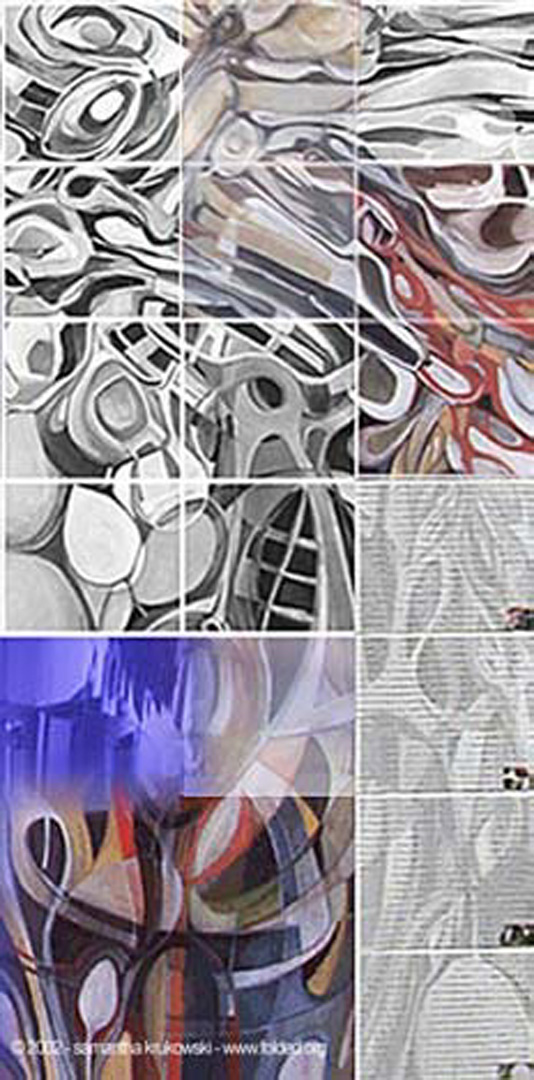“Folded: negotiating the space between real and virtual worlds” by Krukowski
Conference:
Type(s):
Interest Area:
- Application
Title:
- Folded: negotiating the space between real and virtual worlds
Session/Category Title: Manifesting Art
Presenter(s)/Author(s):
Abstract:
A painting is a landscape of possibilities (fig.1) – a form field, a material experiment, a background or foreground, a place of play and imagination. Photographs of people looking at paintings reveal them looking into them, finding things in them that were never consciously put down, never put on the canvas. The way people look at paintings requires a painter to remember the world outside of the work that it, itself, points to. Not only is the materiality of the painted field interesting–its image, vibrant hues and liquid surfaces. What is increasingly interesting, given the possibilities of expanded visualization systems, is how a painting might move into and out of itself, towards and away from its material existence, based on what may or may not be found in its home medium.
References:
1. Foucault, M., on Velazquez’ Las Meninas. 1966 in Les Mots et les choses, Paris.
2. Sartre, J-P., 1948. La recherche de l’absolu.
3. Cage, J., 1969 Notations, New York: Various Works
4. Swiss Minimalism, by Herzog, DeMeuron and Zumthor
5. Saper C., 2001. Networked Art.
6. Dollens, D. 2001. D2A Digital to Analog.
7. Krueger M., 1991. Artificial Reality II.
8. Koolhaas R., 1995. Delirious New York. New York.
9. Lynn G., 1993. Folding in Architecture in Architecture Design Profile No 102.
10. Deleuze, G., 1988. Le Pli Leibniz et Le Baroque.
11. Cache, B. 1995. Earth Moves, MIT Press.




